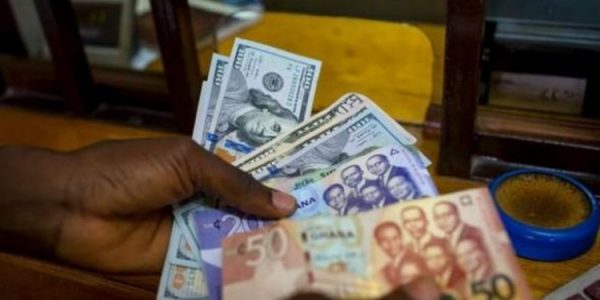The cedi’s battle against the US dollar has always been one-sided – with the local currency’s struggles well documented.
It is almost certain that any news report on the cedi has always focused on how much of its value it has lost against the US dollar, occasionally interspersed with bouts of positive performance.
Although the cedi in 2019 lost nearly 13 percent of its value against the US dollar, the performance blights the fact that in the last two weeks of the year, the cedi actually made some gains.
That resurgence continued well into the new year 2020, and the local currency has continued its rare dominance over the US greenback. Bloomberg, which tracks more than 140 currencies worldwide, on Monday, February 3, 2020, reported that the cedi’s performance against the dollar is the best when compared to any other currency.
According to Bloomberg, the cedi has appreciated by 3.4 percent. But exactly what does this mean for businesses, individuals or the economy as a whole?.
To start with, a depreciation of the cedi is always bad news for the economy especially the public debt. The Bank of Ghana’s latest debt figures shows that the total public debt stands at US$39 billion out of which the external component is US$20.3 billion (made up of loans, bonds and other commitment borrowed in dollars and must be paid in same).
Whenever the government has to service any part of the external debt, it would have to source dollars at the prevailing rate to service the debt.
For instance, in 2015 when Ghana went in US$1 billion Eurobond at a coupon rate of 10.75 percent with a maturity of 15 years, in layman’s terms, it meant that the government would have to pay the cedi equivalent of US$107.5 million every year to service the bond.
Back then the cedi’s exchange rate was about GHS3.78 to a dollar – meaning that particular bond would cost in cedi terms GHS406.35 million all things being equal. But today, that same amount dollar amount would cost government GHS581.76 million – a difference of GHS175.41 million.
The recent economic data published by the Bank of Ghana showed that the country’s total public debt, when measured in USD, dropped from US$39.4 billion in October 2019 to US$39 billion in November 2019.
However, because the local currency weakened during that particular period, the cedi equivalent went up from GHS210.5 billion to GHS214.9 billion.
Putting the cedi’s rise into perspective
Given that the cedi has appreciated by about 3 percent against the dollar since the start of the year 2020, it would mean that, if the external component of the debt remains at US$20.3 billion (GHS112.33 billion) at the end of 2019 as at Monday, February 3, that same figure will now be worth GHS109.86 billion at an exchange of GHS5.41 to the dollar.
Also, there will be a marginal relief for people servicing dollar loans, but earn their income in cedis. A key example is people who are servicing mortgage loans. At the beginning of the year for instance when a dollar was trading at GHS5.53, a person paying US$1,000 mortgage would have to raise GHS5,530 to meet their commitment.
But given that the dollar rate has now declined to GHS5.41 as of February 3, the US$1,000 mortgage would now cost GHS5,410 – a difference of GHS120. While it may not be a significant amount, it is indeed a better development compared to what has become the norm.
Exporters and other people who earn income in dollars would, however, be reeling under the cedi’s new-found strength. Basically, it means that the dollars they earn would now offer them less in terms of cedis.
With the government’s issuance of a US$3 billion Eurobond this week, it means that there is likely to be enough dollar supply in the system to meet demand, and this would potentially lead to a stronger dollar.
It is also expected that people who are using the dollar as a store of value will be looking to cut their losses and offload their dollars onto the market, and this will lead to even better performance for the cedi.
Through it all, the question is: How sustainable is this cedi’s resurgence? Well, at least the first quarter of 2020 will be good for the cedi. Long-term sustainability is where the FX Developments Committee comes in.
Policy initiatives and other deliberate approaches have to be devised to address the structural imbalance of the economy which makes people seek more dollars to meet import-driven demand.
Source: Richard Annerquaye Abbey || citibusinessnews

